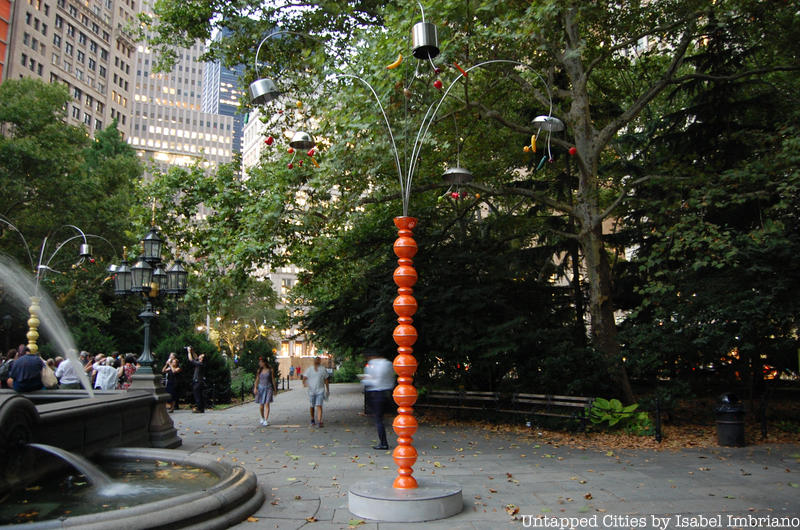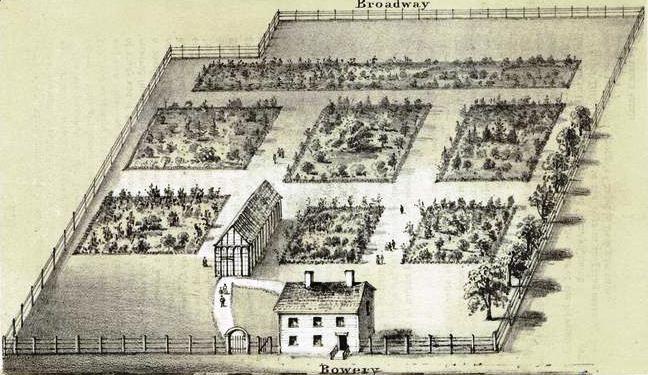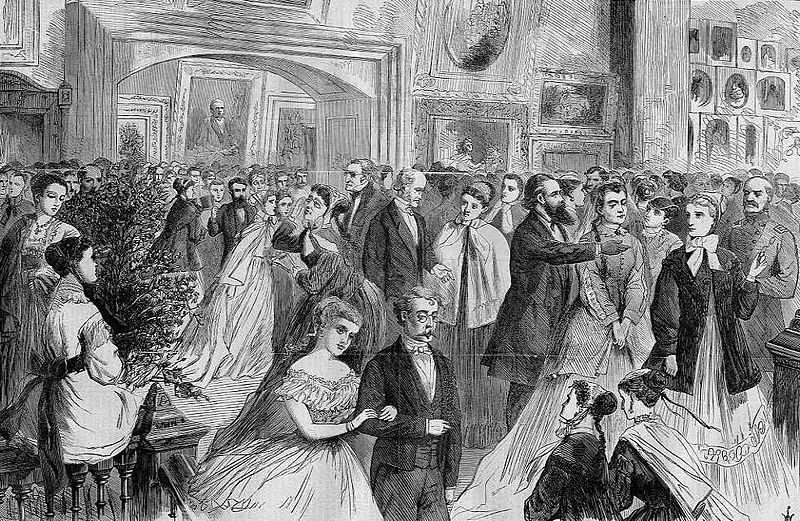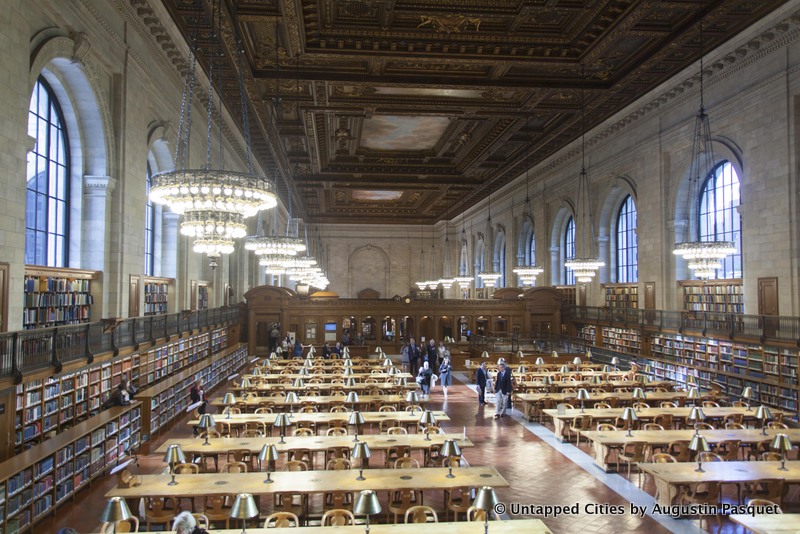 Image from NYPL
Image from NYPL
New York City at the beginning of the nineteenth century was far from being the great metropolis that it is today. Although it was on its way to being the United States’ most populous city with 60,000 people, not much urban life existed north of Houston Street. (And with pigs still roaming the streets as they pleased, the extent of Manhattan’s urbanity was up for debate.)
Admittedly, New York lacked the history of cities like Paris and London, but that didn’t stop proud New Yorkers like Dr. Samuel L. Mitchill from believing New York to be a world class city. Mitchill, a doctor, Columbia College professor, and U.S. senator, didn’t take too kindly to how contemporary writers looked down at his upstart city for not having the cultural sophistication of the great cities of Europe. Intent on proving them wrong, in 1807, Mitchill published what is known as New York City’s first guidebook, “The Picture of New-York, Or The Traveller’s Guide Through the Commercial Metropolis of the United States, By a Gentleman Residing in This City.”
In his 200-page guidebook, Mitchill not only detailed the inner workings of the city government and listed all its markets and benevolent institutions; he made sure to note that New York City was home to several places where locals and visitors could gain cultural enrichment. The city’s elegant gardens, academies, and reading rooms prove that nineteenth-century New York was quite the tourist destination. Here are five of the most notable attractions in New York City’s first guidebook:
1. City Hall Park

Long before the creation of Central Park, when New Yorkers said they were going to “the park,” they were referring to the green space outside of City Hall. With young elm, willow, and catalpa trees, City Hall Park was a “beautiful grove” with the potential to become “an elegant and improving place,” according to Mitchill. Although these days, City Hall Park isn’t usually what New Yorkers refer to when they say /the/ park, it is still a great place for government workers to unwind on their lunch break.
2. Mount Pitt
 View of the city and harbor of New York, taken from Mount Pitt, the seat of John R. Livingston. Photo from NYPL.
View of the city and harbor of New York, taken from Mount Pitt, the seat of John R. Livingston. Photo from NYPL.
Also known as Ranelagh, Mount Pitt was one of the highest natural points on Manhattan island. This 60-foot hill had views of lower Manhattan and the East River that residents today would fight for. Speaking of fighting, Mount Pitt was home to Fort Pitt during the Revolutionary War, though the fort was dismantled soon after. Eventually, Mount Pitt itself was leveled to make room for Pitt and Grand Streets. It goes without saying, the view isn’t quite the same today.
3. Vauxhall Gardens
 Image via Wikimedia Commons, NYPL
Image via Wikimedia Commons, NYPL
With its outdoor wax museum and summer concerts, Vauxhall Gardens, which was located on Broome Street between Broadway and the Bowery, was seen as a “fashionable place of resort.” As Mitchill described it, “The garden is laid out with taste. The walks are agreeably disposed, and strewed with gravel. Their sides are adorned with shrubs, trees, busts, and statues. In the middle is a large equestrian figure of [George] Washington. The orchestra built among the trees, gives to the band of music and singing voices, a charming effect on summer evenings.” These days, this stretch of Broome Street is lined with appealing eateries rather than shrubbery, but it is still worth a visit.
4. The Academy of Fine Arts
 Image via Wikimedia Commons, Harper’s Weekly Magazine
Image via Wikimedia Commons, Harper’s Weekly Magazine
The Academy of Fine Arts was a institution founded in 1802 to instruct students in the Greco-Roman classical style of art. To serve this purpose, the Academy held a notable collection of plaster copies of ancient sculptures and at least 24 volumes of Italian prints. This included copies of sculptures such as “The Fighting Gladiator,” “The Roman Senator,” and “Socrates.” Despite having this large collection of pieces to inspire artists, the Academy could not hold the interest of many young artists for too long. In 1825, a group of artists wanting to venture away from only copying the classics founded the National Academy of Design. By 1841, the Academy of Fine Arts had closed. The National Academy of Design, however, is still thriving on Fifth Ave in the Upper East Side.
5. Joseph Osborn’s Reading Room

No respectable city could be complete without a reading room, also known as a circulating library. And by 1807, New York had three worth noting: the reading room of E. Sergeant on Wall Street, the reading room of D. Longworth, which was known for its extensive collection of Shakespeare’s works; and Joseph Osborn’s reading room, which held a collection of the “most recent and fashionable publications,” including works of fiction. Reading rooms like these have evolved into the New York Public Library, but you can still find private reading rooms hidden around the city.
Next, read about 10 Historic Buildings in NYC Repurposed for the Arts and 10 Abandoned Places to Discover in Manhattan, NYC. Contact the author @ImShilohF.





